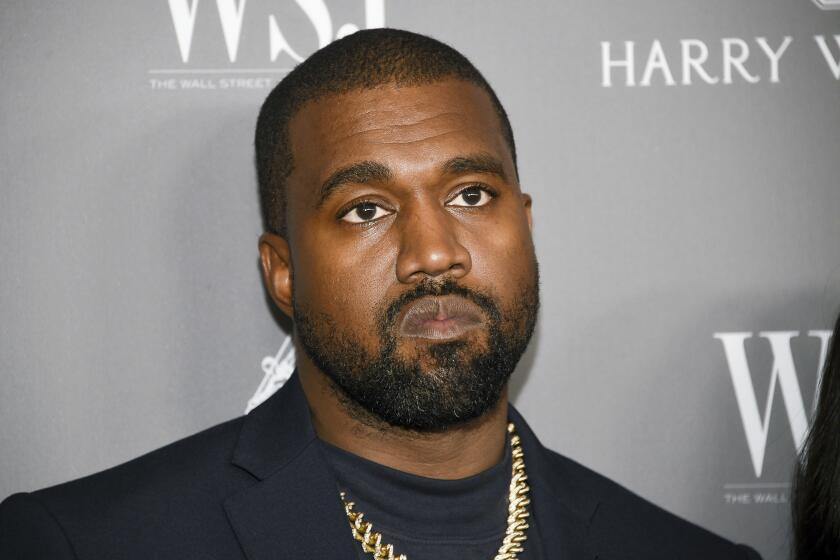Sony Pictures Takes an Animated Leap
- Share via
After a decade of creating digital characters for such live-action movies as “Spider-Man” and “Stuart Little,” Sony Pictures Entertainment is drawing on a new electronic canvas.
On Sept. 29, the company will formally plunge into the crowded world of computer-animated features when it premieres the first of four movies, “Open Season.” The comedy, featuring the voices of actors Martin Lawrence and Ashton Kutcher, chronicles a ragtag pack of animals turning the tables on a group of hunters.
Much is riding on the movie. Sony plans to spend more than $320 million for the four pictures.
“We’re committed to this business,” said Michael Lynton, Sony Pictures’ chief executive. “We think it’s very significant to our future.”
Despite the technical prowess of its Japanese electronics parent, Sony Corp., the movie company was slow to develop computer-animated movies. While the company was spending the last decade laying the groundwork for its entry into feature animation, its competitors were cranking out such blockbusters as “Finding Nemo” from Walt Disney Co. and Pixar Animation Studios Inc., “Shrek” from DreamWorks Animation SKG Inc. and “Ice Age” from 20th Century Fox Film Corp.
“There’s no question they’re latecomers, but they’re coming in with great earnestness and commitment,” said Ron Diamond, founder of online publishing group Animation World Network Inc. “There’s a lot of pressure on ‘Open Season.’ It’s got to perform.”
Studios have largely abandoned hand-drawn animation as moviegoers have enthusiastically embraced computer-generated films. Pixar’s “Cars,” DreamWorks’ “Over the Hedge” and Fox’s “Ice Age: The Meltdown” rank among the 10 highest-grossing films this year.
But the genre’s success has triggered a computer-animated boom some worry might turn into a glut. Nearly 30 animated films will be released from 2006 to 2008, a record number according to box-office tracking firm Exhibitor Relations Co. The production frenzy is reminiscent of a decade ago, when Disney’s traditionally animated blockbusters such as “The Lion King” spurred others to jump into the business -- only to lose their shirts in a string of box-office bombs that led to widespread layoffs.
Although few are predicting a similar downturn, there are signs audiences are tiring of animated movies that seem derivative. Recent misfires include Warner Bros.’ “The Ant Bully” and Disney’s “The Wild.”
“It used to be you could bring out an animated movie once every two months and, if they were marketed well and released by a studio with a strong branding, there would be an audience there waiting,” said Paul Dergarabedian, president of Exhibitor Relations. “That’s no longer necessarily the case.”
For Sony Pictures, however, developing animated films comes with an added bonus: the company can continue sharpening its expertise in its key visual effects business while it develops films for the lucrative family market. This year it released “Monster House,” which used technology that digitally captures the performances of actors.
Industry leader Pixar developed in much the same way, building on a foundation of homegrown technology and visual effects. Unlike most animated movie studios, Sony Pictures will keep its hand in visual effects as a way to diversify its business and draw digital artists who want to work in both areas.
The task of building Sony Pictures Animation has been handed to former DreamWorks SKG executives Penney Finkelman Cox and Sandra Rabins, who have had pivotal roles at virtually every other U.S. animation studio. The two have spent the last four years assembling top talent, including “Lion King” director Roger Allers and “Tarzan” director Chris Buck. Finkelman Cox and Rabins are executive vice presidents.
“All we think about is how desperately we want our movies to be successful,” Finkelman Cox said. “We’ve put everything we have into them.”
Rabins first worked with Finkelman Cox on director James L. Brooks’ 1983 Oscar-winning movie “Terms of Endearment.” She spent eight years as a production and finance executive at Walt Disney Studios, where she worked on various animated films and helped Pixar transform itself into a full-fledged digital animation studio for the release of its first hit, “Toy Story.”
When former Disney studio chief Jeffrey Katzenberg created DreamWorks with director Steven Spielberg and entertainment mogul David Geffen, he turned to Rabins and Finkelman Cox to launch an animation division. Their tenure spanned DreamWorks’ traditionally animated films as well as its later success in the computer-generated animation field with the blockbuster “Shrek,” on which they were executive producers.
The two left DreamWorks in 2001 and worked briefly as independent filmmakers before Yair Landau, president of Sony Pictures Digital Entertainment, tapped them to head Sony’s Pictures’ new animation group, which was created in 2002.
Landau had long thought about launching an animation unit to build on Sony’s expertise in character animation. As early as 1996, he advocated entering the business and found some interest among Sony’s Japanese owners.
But Sony lacked the expertise to enter into such an expensive and crowded industry. That changed with the growing prowess of Sony Pictures Imageworks Inc., which won an Academy Award for experimental animation short “The ChubbChubbs.”
“I felt like we had a lot of talent that was working on other people’s ideas and movies,” said Landau, who oversees the animation and Imageworks units. “And I thought we could create our own ideas and movies.”
Landau found an ally in Tim Sarnoff, who arrived in 1997 from Warner Bros., where he shepherded Spielberg’s animated television series “Tiny Toon Adventures” and other cartoons.
Sarnoff pushed Sony Pictures Imageworks to create such digital characters as Stuart Little. The division soon earned a reputation for creating realistic characters in live-action films.
“We literally have the tools to create anything anybody wishes to see visually and we have the people here who can tell great stories,” said Sarnoff, president of Sony Pictures Imageworks. “Just put the two together and magic will happen.”
Enter Finkelman Cox and Rabins. The pair adopted a straightforward strategy: keep costs down by limiting hires (the animation unit employs only 100 story artists, writers and directors); recruit talented directors and artists; and foster creative diversity by eschewing a “house style” so the movies don’t appear the same.
Sony’s four upcoming movies are widely divergent. “Open Season” is based on the humor of “In the Bleachers” cartoonist Steve Moore, who formerly worked at The Times.
Next summer, Sony will release “Surf’s Up” a “mockumentary” about how penguins invented surfing. Two films in pre-production are “Hotel Transylvania,” about monsters hiding out in a hotel, and “Cloudy with a Chance of Meatballs,” based on the popular children’s book.
“We don’t want there to be a singular vision,” Finkelman Cox said. “We think there’s an opportunity here to create diversity and amazing originality and freshness.”
Still, Sony Pictures Animation has experienced some labor pains. The management style of Finkelman Cox and Rabins has rankled some artists and directors, who complain that the executives can be too controlling.
“I think that Sony is going to do big things, but they will really do bigger things when they start looking to artists for ideas and trusting the artists for those ideas,” said John Sanford, a former story artist at Sony Pictures Animation who was fired in July.
Sanford is one of several casualties of “Cloudy with a Chance of Meatballs,” which has been heavily reworked and is now on its third set of directors.
But Buck, who is a director of “Surf’s Up,” credits Finkelman Cox and Rabins with creating a vibrant studio.
“The energy is here like it was in the early days of Disney,” he said.
Finkelman Cox and Rabins say they welcome fresh ideas but make no apologies for their exacting standards. Like the original “Shrek,” “Cloudy” is a challenge partly because it is based on a slim children’s book that needed major work to round out a 90-minute film.
“You just plug away at it,” Rabins said. “The story needed to be right. We would never proceed until it was right.”
*
dawn.chmielewski@latimes.com
More to Read
The biggest entertainment stories
Get our big stories about Hollywood, film, television, music, arts, culture and more right in your inbox as soon as they publish.
You may occasionally receive promotional content from the Los Angeles Times.











